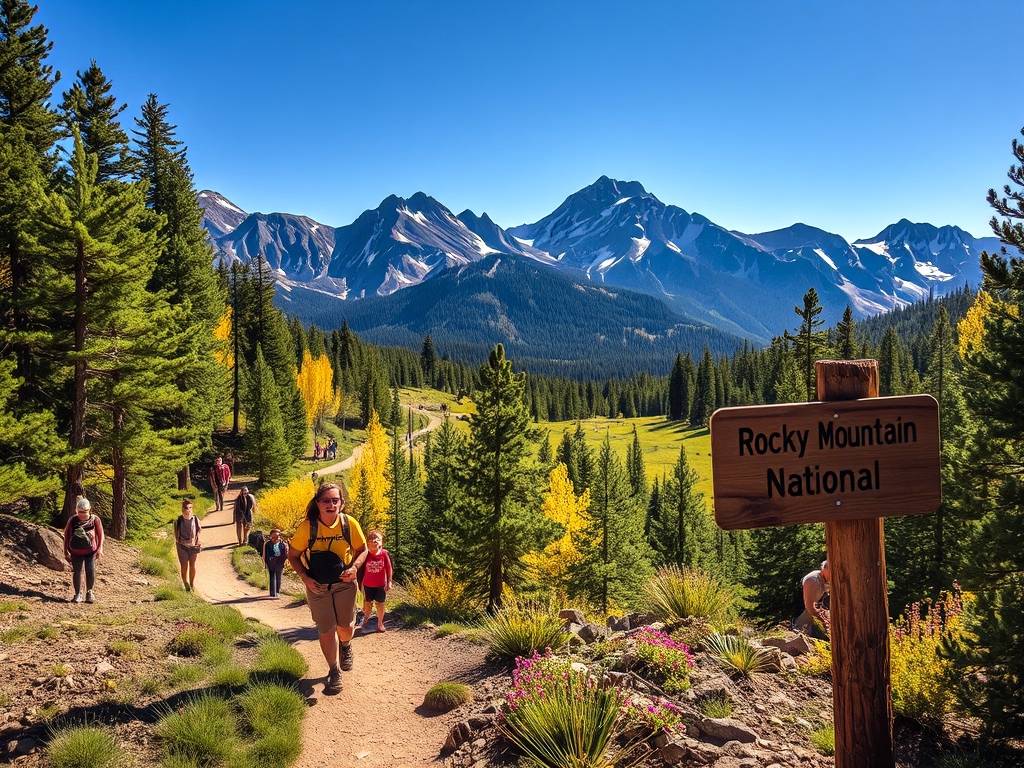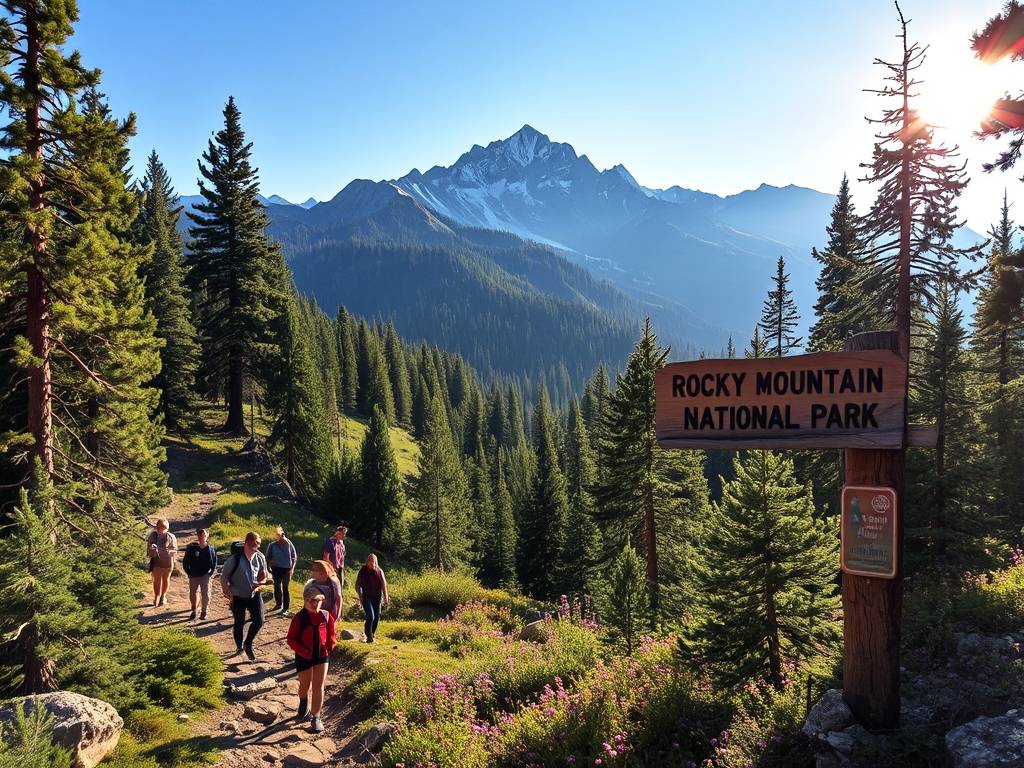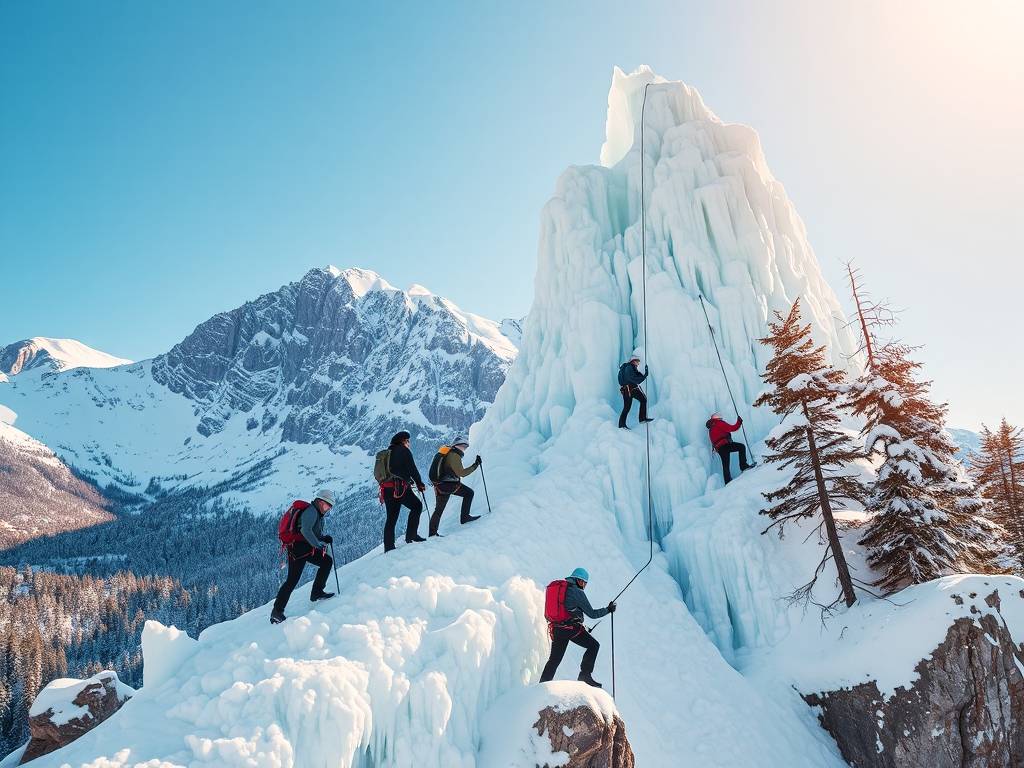USA Travel
US Travel: Hiking in Colorado’s Rocky Mountain National Park
Rocky Mountain Majesty: Your Ultimate Guide to Hiking Adventures in Colorado's Crown Jewel
There’s a particular kind of magic that happens when you step onto a trail in Colorado’s Rocky Mountain National Park. It starts with the crunch of gravel under your boots, the scent of pine and high-altitude chill filling your lungs, and the overwhelming silence that descends once you leave the road behind. Before you, a landscape of breathtaking scale unfolds—jagged peaks claw at a sky of impossible blue, ancient glaciers cling to mountainsides, and meadows of wildflowers dance in the alpine breeze. This isn't just a walk in the woods; it's an immersion into one of America's most iconic and dynamic wilderness areas.
Planning your hiking adventure in Rocky Mountain National Park can feel as daunting as the mountains themselves. Where do you start? How do you prepare for the high-altitude hiking trails? This guide is designed to be your trusted trail companion, walking you through everything you need to know to have a safe, unforgettable, and profoundly rewarding experience.

First Things First: Navigating the Park's Timed Entry System
A crucial part of modern planning a trip to Rocky Mountain National Park is understanding the Timed Entry Permit System. Implemented to manage congestion and protect the fragile ecosystem, this system requires visitors to reserve a timed entry slot for most of the day during the peak season (typically late May through October). There are two types of permits: one for the main park areas, including Bear Lake Road, and another for the rest of the park.
Don't let this discourage you! It’s a blessing in disguise, ensuring your experience in Rocky Mountain National Park is one of serene beauty, not traffic jams. Reservations are released months in advance and also at 5 PM Mountain Time the day before. Set a reminder and be ready online—it's your ticket to paradise. If you don't secure a permit, you can still enter outside of the required reservation hours (typically before 5 AM or after 6 PM), which is a fantastic strategy for sunset hikes in Colorado or capturing the soft morning light.
Gearing Up for Altitude and Adventure
The single most important factor for hiking in Colorado's high country is acclimatization. The park’s elevations range from around 7,800 feet to over 14,000 feet. Altitude sickness is a real risk and can affect anyone, regardless of fitness. To mitigate this, plan to spend a day or two in a nearby town like Estes Park or Grand Lake before tackling any strenuous hikes in Rocky Mountain NP. Drink twice as much water as you think you need, avoid alcohol for the first 48 hours, and listen to your body.
Your gear can make or break your best day hikes in Rocky Mountain National Park. Start with broken-in, waterproof hiking boots with excellent ankle support. The weather here is famously mercurial; a sunny morning can transform into a thunderous, hail-strewn afternoon in minutes. Layering is your best friend. A moisture-wicking base layer, an insulating mid-layer like a fleece, and a waterproof/windproof outer shell are non-negotiable. Don’t forget a wide-brimmed hat, sunglasses, and high-SPF sunscreen—the high-altitude sun is intense.
Must-Do Hikes: From Serene Lakes to Sky-High Summits
The park offers over 355 miles of trails, catering to every level of ambition. Here are some quintessential Rocky Mountain National Park trail recommendations:
-
For the Iconic Photo & Family-Friendly Stroll: Bear Lake to Emerald Lake This is the perfect introduction to the park's alpine splendor. Starting at the incredibly popular Bear Lake trailhead, this out-and-back trail is a relatively easy 3.5-mile round trip. You’ll pass the stunning Nymph Lake, dreamy Dream Lake, and finally, the jewel-like Emerald Lake, cradled beneath the dramatic cliffs of Hallett Peak and Flattop Mountain. It’s one of the best family-friendly hikes in RMNP and offers immense scenic reward for minimal effort. Go at sunrise for smaller crowds and ethereal light.
-
For a Moderate Challenge with Epic Payoffs: Sky Pond via the Loch Often cited as a contender for the best day hikes in Rocky Mountain National Park, the journey to Sky Pond is an adventure in itself. This 8-9 mile round-trip trek begins at the Glacier Gorge Junction trailhead. You’ll pass Alberta Falls before a steady climb leads you to The Loch, a magnificent alpine lake. The final push involves a fun but slightly tricky scramble up a waterfall (Timberline Falls) before you emerge into the stark, breathtaking basin holding Sky Pond. Surrounded by the Sharkstooth and Taylor Peak, it feels like the top of the world.
-
For the Summit Seeker: Longs Peak The ultimate challenging hike in Rocky Mountain National Park is the ascent of Longs Peak, the park's only "14er" (a peak over 14,000 feet). The standard Keyhole Route is a 14-mile round-trip marathon that gains nearly 5,000 feet of elevation. This is not a hike; it’s a climb that involves exposed ledges, narrows, and scrambling. It requires an pre-dawn start (often 2-3 AM), perfect weather, and significant experience. Summiting Longs Peak is a life-list achievement for many, but it demands respect and thorough preparation.

-
For Alpine Tundra and Wildlife Viewing: Ute Trail To truly experience the unique alpine tundra ecosystem in Rocky Mountain NP without a grueling climb, the Ute Trail is unparalleled. This trail follows an ancient path used by Indigenous peoples, traversing the high tundra above the treeline. Starting at the Ute Crossing trailhead on Trail Ridge Road, you'll walk across the roof of the park with 360-degree views. It's one of the best spots for wildlife watching in Rocky Mountain National Park, with a high likelihood of seeing elk, marmots, pikas, and perhaps even a moose in the willows below.
Beyond the Trail: Tips for a Flawless Visit
A successful hiking adventure in Rocky Mountain National Park involves more than just picking a trail.
- Wildlife Safety: You are in the home of black bears, moose, and elk. Always maintain a safe distance (at least 75 feet for most animals, 120 feet for predators). Never feed wildlife. Carry bear spray and know how to use it, though encounters on busy trails are rare.
- Leave No Trace: The pristine nature of the park depends on us. Pack out everything you pack in. Stay on designated trails to protect fragile vegetation. Leave the wildflowers and rocks for the next person to enjoy.
- Hydration and Nutrition: The dry air and physical exertion will dehydrate you quickly. Carry a water filter to refill from streams (treat all water) or pack at least 3-4 liters per person. High-energy snacks like nuts, jerky, and energy bars will keep your fuel tank full.
- Check Conditions: Before you go, always check the park's official website for trail closures, weather forecasts, and avalanche risk (in spring and fall).
Standing on a ridge in Rocky Mountain National Park, watching the shadows of clouds race across vast valleys, you understand why this place is sacred. The wind whispers through the pines, a marmot whistles from a rock, and for a moment, everything feels perfectly in place. This is more than a vacation; it's a reset for the soul. With careful planning, respect for the landscape, and a spirit of adventure, your journey into the heart of the Rockies will leave you with memories—and a longing to return—that will last a lifetime. Your trail is waiting.
相关文章
- US Travel: Snowshoeing in Maine’s Baxter State Park
- US Travel: Hiking in Tennessee’s Great Smoky Mountains
- US Travel: Paddleboarding in Texas’s Lake Travis
- US Travel: Rafting in West Virginia’s New River Gorge
- US Travel: Canyoneering in Utah’s Zion National Park
- US Travel: Birding in Texas’s Rio Grande Valley
- US Travel: Camping in Oregon’s Crater Lake National Park
- US Travel: Sailing in Massachusetts’s Cape Cod
- US Travel: Snorkeling in Hawaii’s Maui Molokini Crater
- US Travel: Ice Climbing in New York’s Adirondack Mountains
发表评论
评论列表
- 这篇文章还没有收到评论,赶紧来抢沙发吧~


